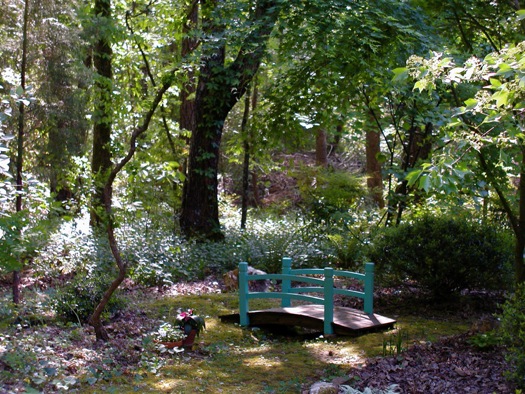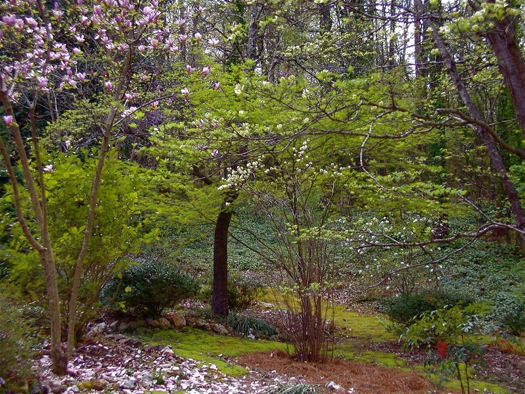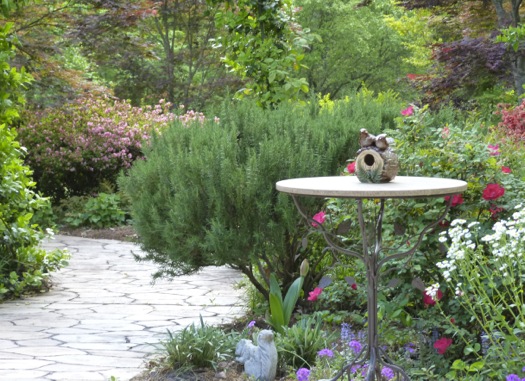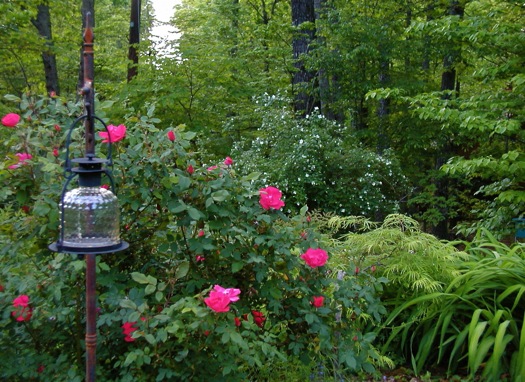About Garden Chores
 Sunday, March 1, 2015 at 5:00AM
Sunday, March 1, 2015 at 5:00AM What is a chore? A routine task, duty, work, drudgery, drag, pain... these are some of the synonyms in the thesaurus for "chore." But these words hardly describe most of the things I do in the garden.
Is it a chore to be outside in the fresh air, with birds to serenade you? Is it a chore to smell damp earth and the dark, rich odor of old fallen leaves? Is it a chore to move one's body, to stretch and reach and bend, to feel muscles contract and relax, to begin wearing a coat but soon warm up so that only shirt sleeves are needed? Is it a chore to work until one is tired, but a good tired, feeling the satisfaction of a job accomplished?
Is it a chore to smell damp earth and the dark, rich odor of old fallen leaves? Is it a chore to move one's body, to stretch and reach and bend, to feel muscles contract and relax, to begin wearing a coat but soon warm up so that only shirt sleeves are needed? Is it a chore to work until one is tired, but a good tired, feeling the satisfaction of a job accomplished?
 Spring will hit fast, probably in the next few days, and there are many "chores" I need to do. Here in Helena, we had many days of rain and freezing temperatures in February. While the lowest temperature was 12 degrees F (-11 degrees C), the highest temp was 76 degrees F (24 degrees C); so there were brief interludes when I could get things done in the garden. More rain is forecast for most of this coming week, but yesterday produced one of those moments with clear skies and mild temperatures. I enjoyed an afternoon of pruning, which is my favorite chore of all time. Most trees and shrubs in my garden have benefited from pruning.
Spring will hit fast, probably in the next few days, and there are many "chores" I need to do. Here in Helena, we had many days of rain and freezing temperatures in February. While the lowest temperature was 12 degrees F (-11 degrees C), the highest temp was 76 degrees F (24 degrees C); so there were brief interludes when I could get things done in the garden. More rain is forecast for most of this coming week, but yesterday produced one of those moments with clear skies and mild temperatures. I enjoyed an afternoon of pruning, which is my favorite chore of all time. Most trees and shrubs in my garden have benefited from pruning.
Not all trees and shrubs need pruning every year, but pruning is done for a number of reasons: to shape or to maintain size, and to remove dead, diseased or deformed branches. (See my previous posts: Pruning is fun and other basics you need to know and Five Rules To Prune By.
Here are the plants we pruned in February:
1. Apple trees
2. Crape myrtles (Gentle pruning for shaping; no "crape murder" here!)
3. Euonymus
4. Japanese maples (This was close - Japanese maples should be pruned before the sap starts rising in early spring. We removed a few branches but did not do any over-all pruning. If the sap is rising, these beautiful trees could "bleed to death." 
5. Nandina
6. Roses
7.Yaupon hollies
8. Many summer blooming shrubs, including Hydrangea macrophylla 'Endless Summer', Hydrangea paniculata 'Limelight', Gardenia and Spirea japonica 'Anthony Waterer.' Spring bloomers, such as azaleas, will be pruned soon after flowering is complete.
In addition to pruning, we planted some new native azaleas and several other shrubs. We also began general clean-up, a process that will stretch into March, clearing old seed heads, fallen leaves and twigs.
Coming up in March will be the spreading of fresh pine straw and pine bark mulch, which will make everything look neat and smell wonderful. Also, beginning in March: Fertilizing! Everything! With organic fertilizers, especially fish emulsion. Fertilizing involves a lot of mixing and carrying and borders on being a real "chore." I don't particularly enjoy doing it, but it is essential. We also prepare our vegetable garden in March, getting rid of weeds, spreading compost and working organic fertilizer into the soil. As soon as we have a dry day or two, I will plant potatoes, onions, and lettuce. Another thing to do in March is to spray horticultural oil on the apple trees and many shrubs to decrease obnoxious insects. The apple trees and some shrubs will also get a treatment of an organic fungicide. I also plan to plant a few more ferns and other goodies...
Are you tired yet? As I said, it is a good tired! People often look at the scope of our gardens and comment on what a lot of work it must take. Lou and I do all the upkeep ourselves, and if we did not love it, we would not live here; and truly, it does not seem like so much. The mass of work is seasonal, in spring and fall, and many jobs are only done once or twice a year. My favorite seasons? Spring and fall!
 Note: I took all the images in this post in previous years, but I will enjoy similar views this spring, thanks to pruning and other garden chores. Happy gardening!
Note: I took all the images in this post in previous years, but I will enjoy similar views this spring, thanks to pruning and other garden chores. Happy gardening!